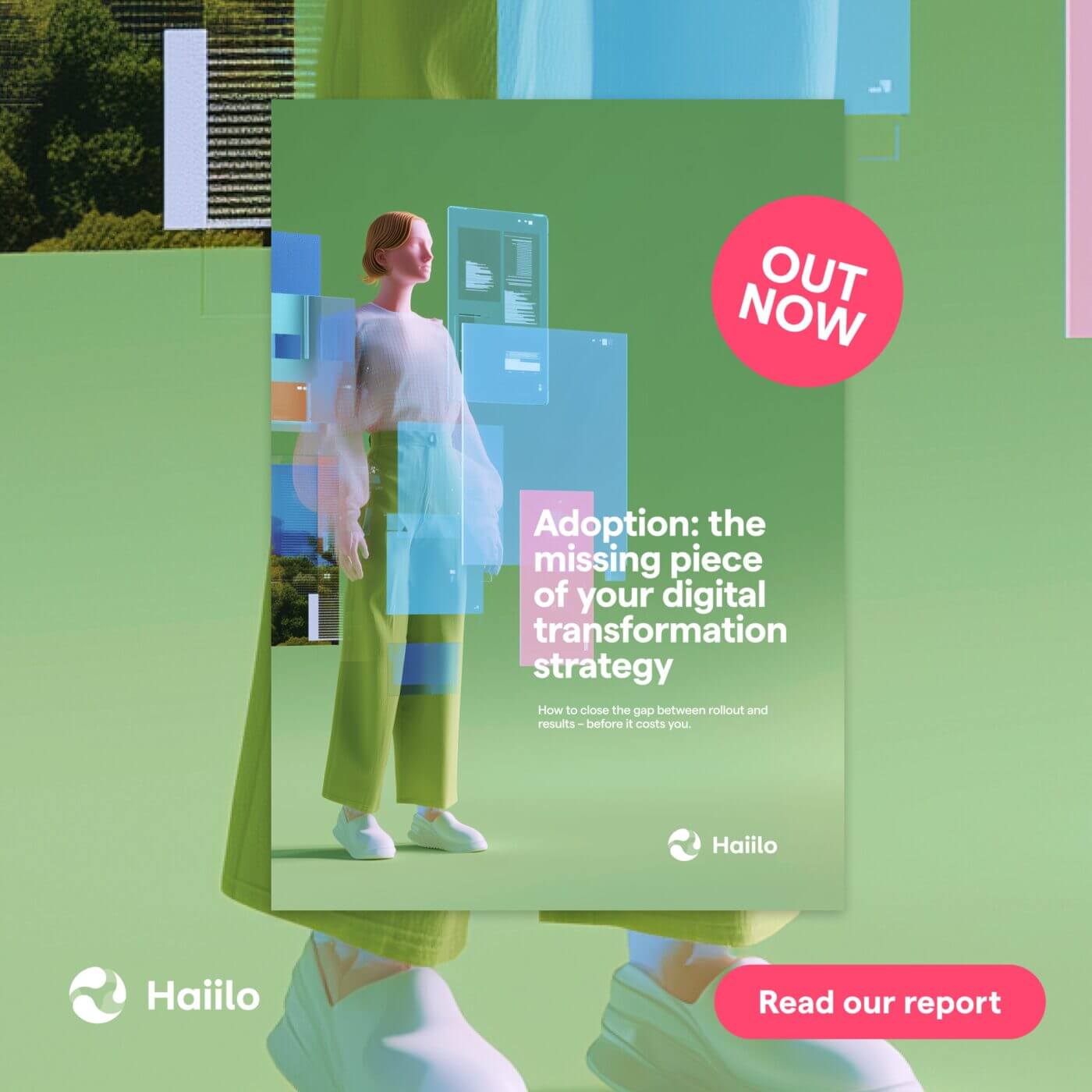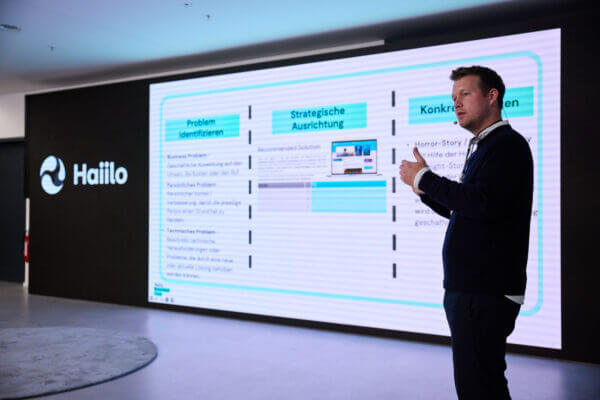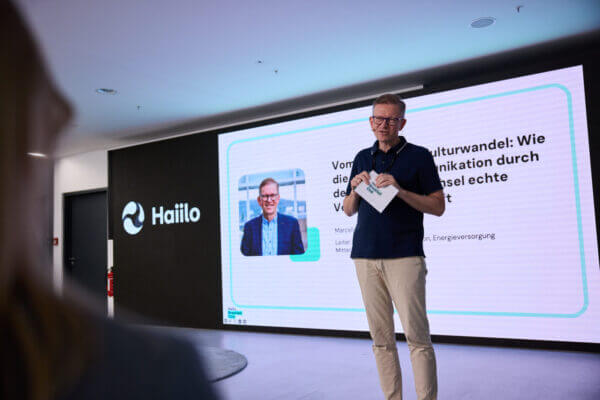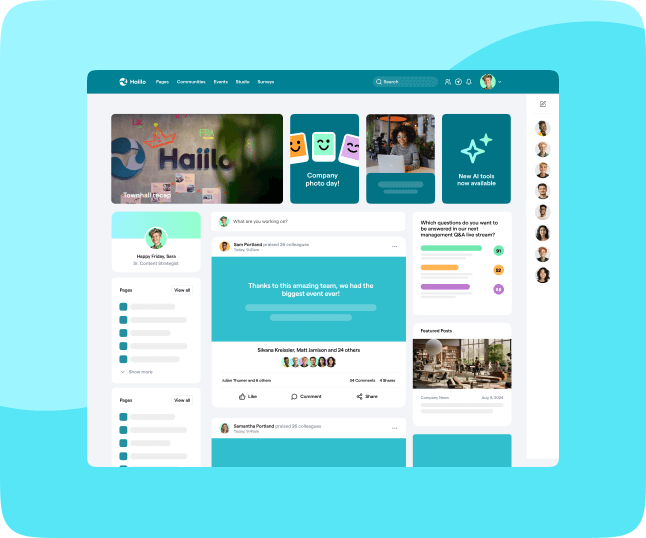By Sven Hoffman, Vice President of Product, Haiilo
Cast your mind back to 2005.
Back then, IT security was often “someone else’s job.” A compliance officer’s checklist item. A quarterly audit. Maybe a firewall and a password policy – if you were lucky.
Fast forward to today, and no one in IT would dream of treating security as an afterthought. Cyber threats are omnipresent, security breaches are career-ending, and protecting digital infrastructure is a core part of every IT strategy.
Accessibility is following the same path.
Where security once meant shielding systems from external threats, accessibility now demands we open them, to everyone. Like security, accessibility is not a static feature. It’s a discipline. A mindset. A long-term commitment to quality, resilience, and inclusion.
Accessibility is resilience, not just compliance
For many IT leaders, accessibility still feels like a legal checkbox. Adhere to WCAG 2.2, file the paperwork, move on. But let’s flip that script. Think of accessibility not as a hurdle, but as a high-performance standard. One that builds better systems.
Accessible software is more usable. It’s cleaner under the hood. It’s consistent, predictable, and scalable. These are all hallmarks of resilient, future-proof IT architecture.
And this isn’t just about screen readers or color contrast. Accessibility touches everything: keyboard navigation, focus states, error messaging, responsive design, and semantic HTML.
When systems are built to adapt to everyone, they become easier for everyone to use – not just those with impairments.
Why this matters right now
We’re entering a new era of enforcement.
Across the globe, accessibility is becoming a legal obligation, not just a best practice. The European Accessibility Act (EAA) is rolling out across member states, and the Barrierefreiheitsstärkungsgesetz (BFSG) in Germany takes effect in June 2025.
These regulations don’t just apply to public institutions anymore. Any company providing digital services – intranets included – must ensure accessibility or face significant penalties.
In the US, lawsuits under the ADA are climbing year-on-year. Globally, organizations are being called out and held accountable. Accessibility is now a boardroom topic; a matter of brand reputation, legal risk, and user equity.
And let’s not forget the business case: over 1 billion people worldwide live with a disability. That’s over 15% of the population: an untapped user base who will engage, advocate, and stay loyal to platforms that include them.
Accessibility by design at Haiilo
At Haiilo, we believe a great intranet isn’t truly great unless it’s accessible to everyone. That’s not just philosophy, it’s practice.
We’ve been investing in accessibility for nearly a decade, and today, it’s a core part of how we design, build, and iterate on our platform.
We adhere to WCAG 2.2 AA guidelines and bake accessibility into every stage of our product lifecycle, from concept to QA. But more than that, we go beyond the minimum. We ask ourselves: what would inclusive design look like if it were proactive, not reactive?
Let’s break that down:
Catalyst: our accessible-by-default UI system
We created Catalyst, our internal design system, to ensure accessibility is never optional. It’s a library of reusable UI components – buttons, forms, modals, and more – each one designed with accessibility built-in.
From contrast ratios to ARIA labels, Catalyst makes it easy for our teams to apply best practices without reinventing the wheel. It also ensures consistency across the platform, which is vital for users who rely on assistive technologies to navigate interfaces.
Accessibility starts at the concept phase
Our product designers and product managers are trained in WCAG principles. They don’t just tick boxes; they think through user flows from all angles.
What happens when a screen reader lands on a pop-up? How does a keyboard-only user reorder items in a drag-and-drop module? These aren’t edge cases, they’re design cases.
This mindset is especially critical for highly visual and interactive elements like dashboards or custom layouts.
Testing accessibility like we test for bugs
Every feature we ship goes through accessibility testing as part of our QA process. Our quality engineers maintain a checklist of non-negotiables and regularly test functionality using tools like JAWS, one of the most widely used screen readers in the enterprise space.
We also conduct regular holistic audits of our platform. Sometimes initiated by customers, often by us – always with transparency. Each audit is conducted by a third party – so there is no bias – and documented in an Accessibility Conformance Report (ACR), available in our Trust Center. Every issue found is tracked, resolved, and logged.
Violations of WCAG guidelines are treated as bugs, not as “nice-to-haves.” And like any bug, they go into the backlog, get prioritized, and are resolved.
A transparent, open process
Accessibility is never “done.” We’re committed to continuous improvement, and that means creating open feedback loops with our customers.
Users can flag accessibility issues directly, and we treat those with the same urgency as functional bugs. Of course, there are occasional trade-offs, but we make those decisions openly and always aim to deliver value without compromising on inclusivity.
We’re also planning to level up our team. In the coming months, we’ll be rolling out advanced accessibility training for our product managers, QA engineers, and designers, led by external specialists.

The future is accessible – and IT must lead the way
If you’re in IT, you’re already thinking about system resilience, risk mitigation, and user experience. Accessibility belongs in those conversations.
Think of it this way: secure systems protect data; accessible systems protect people. And in a world where employee experience defines organizational success, protecting people is good business.
You don’t have to wait for regulation to catch up. You can lead. You can be the one who moves the organization forward, not because you have to, but because you see what’s possible.
At Haiilo, we’re building accessible systems not because it’s easy, but because it’s right. And because the best intranet – the one that truly connects people – is the one that includes them all.
Curious about where your intranet stands on accessibility?
We’re happy to walk you through our standards, audit process, and how we support IT teams who are ready to move from checklists to real change.
Let’s make accessibility part of your digital strategy, not your technical debt.
Why does this matter?
- Employees juggle 35+ apps daily, wasting 61% more time than necessary.
- 70% of employees lose 20 hours per week to fragmented systems.
- 68% of organizations fail to achieve the desired ROI from digital transformation efforts.
How can Haiilo help?
Haiilo helps IT teams do more with less – without adding complexity.
You don’t need more tools. You need better integrations, smarter automations, and less complexity. Haiilo is your intuitive Digital Home, and it brings together the tools you already love without overloading IT.
With Haiilo, you can:
- Improve user adoption with an interface employees actually enjoy using.
- Cut through the noise with smart, automated, and hyper-relevant updates.
- Eliminate tech bloat with 130+ integrations – everything in one place.
- Track usage, measure engagement, and optimize effortlessly.
The Impact:
- 75%+ frontline employee adoption
- 67% increase in productivity through smarter workflows
- $2.4m saved annually by reducing staff churn and inefficiencies






